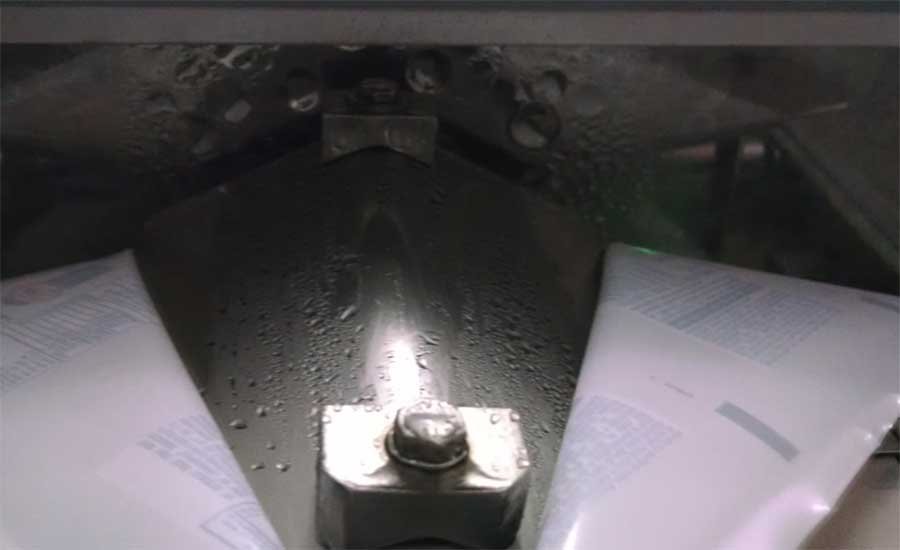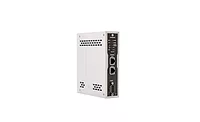Fundamental Requirements of the 3-A Sanitary Standards and their Relationship with Regulations
Although the 3-A Standards are not regulations, many regulatory authorities treat them as such to permit the use of equipment for food or dairy processing

Image credit: endopack/iStock/Getty Images Plus via Getty Images
Many misconceptions exist regarding the 3-A Sanitary Standards1 and how they relate to regulations from the U.S. Food and Drug Administration (FDA), the U.S. Department of Agriculture (USDA), and various state regulations. This article attempts to clarify the basics of the standards and their relationship with regulations.
The first 3-A Sanitary Standards were written over a century ago, in the 1920s, for pipe fittings. As one might imagine, sanitary equipment at that time did not resemble the equipment we have today. There was no clean-in-place (CIP) process, pipelines were made of glass (Figure 1), and wood was still commonly used for processing equipment (Figure 2). However, state and city officials were starting to recognize that people were getting sick and dying of foodborne illnesses.


In 1944, the U.S. Public Health Service began participating in the development of the 3-A Sanitary Standards, which are developed in a collaboration between the three stakeholder groups: food processors, regulators, and equipment manufacturers. A majority of the representatives of all three stakeholder groups must approve any new standards or revisions of existing standards before they become effective.
The 3-A Sanitary Standards are not regulations. They merely define the industry standards required to be labeled with the 3-A symbol.2 The symbol signifies that the equipment conforms to the requirements in the applicable standard and has been verified by a Certified Conformance Evaluator (CCE) in a Third-Party Verification (TPV).
The fundamental criteria in the 3-A Standards are that the equipment be nontoxic, cleanable, inspectable, and able to withstand the conditions of its intended use. These general principles are supported by all the criteria necessary for conformance of product contact surfaces:
- Materials permitted and certification
- Maximum surface roughness
- Sanitary welding
- Minimum radii
- No surface imperfections
- No crevices
- No threads
- No perforations
- No springs
- Cleanable
- Accessible for inspection.
Furthermore, it is essential to understand that product contact surfaces are not only those in direct contact with the products, but also any surfaces from which residues, liquids, or other contaminants can drip, drain, drop, or be drawn into contact with those surfaces. All surfaces above open product, containers, and packaging materials must also conform to the requirements or have a shield that prevents any contaminants from getting into the product. Figure 3 shows no such protection for the package, and so condensation from insanitary surfaces above drips down onto the pouch.

Due to the various requirements for types of equipment, different standards cover different equipment types—tanks, pumps, valves and fittings, fillers, instruments, heat exchangers, conveyors, concentrating equipment, farm/raw milk equipment, and cheese and butter processing equipment. Additionally, there are 3-A Practices for the support systems and final installation requirements for large processing systems, such as dryers, evaporators, compressed air, culinary steam, piping and CIP systems, environmental air, and pasteurizers.
Most of the current standards now reference the 3-A General Standard 00-01, which lists the default criteria, unless specified otherwise in the individual standards. This helps keep all the requirements in the individual standards aligned, such as the requirements for materials, unless the type of equipment dictates that additional requirements or different criteria should apply.
Looking for quick answers on food safety topics?
Try Ask FSM, our new smart AI search tool.
Ask FSM →
Although the 3-A Sanitary Standards are not regulations, many regulatory authorities treat them as such to permit the use of equipment for food or dairy processing. The Pasteurized Milk Ordinance (PMO) states the following:
"Equipment manufactured in conformity with 3-A Sanitary Standards and Accepted Practices complies with the sanitary design and construction standards of this Ordinance. For equipment not displaying the 3-A Symbol, the 3-A Sanitary Standards and Accepted Practices may be used by Regulatory Agencies as guidance in determining compliance with this Section."3
USDA now relies on 3-A symbol authorization for equipment that has an applicable 3-A standard, and no longer inspects such equipment. The "USDA Guidelines for the Sanitary Design and Fabrication of Dairy Processing Equipment" state the following:
"All product and cleaning solution pipelines, sanitary pipe fittings, valves, instrument fittings, appurtenances, and components which are part of the equipment shall comply with applicable 3-A Sanitary Standards or 3-A Accepted Practices as appropriate."4
The Food Safety Modernization Act (FSMA) Section 117.40, "Equipment and Utensils,"5 states much the same general criteria, without specific compliance requirements; however, equipment that conforms to the 3-A Standards will comply with FSMA, as well.
There have been many instances where equipment has been supplied and installed but did not conform to the 3-A Standards, and was not permitted to operate for producing food products, even when the suppliers claimed their equipment was "3-A compliant." Unless equipment has been designed and fabricated in accordance with the 3-A Sanitary Standards and verified by an independent Certified Conformance Evaluator (CCE), it is extremely difficult to confirm compliance with the industry regulations.
Furthermore, installing equipment without verifying its conformance with the 3-A Sanitary Standards can become extremely costly and time-consuming to correct. Simply specifying that all new food processing equipment be supplied bearing the 3-A symbol will avoid significant time and expense at startup and minimize the risk of product contamination.
References
- 3-A Sanitary Standards. "Standards." https://www.3-a.org/standards.
- 3-A Sanitary Standards. "3-A Then and Now: The 3-A Symbol." https://www.3-a.org/about-3a#:~:text=STEERING%20COMMITTEE-,THE%203%2DA%20SYMBOL,-THE%20SYMBOL%20OF.
- U.S. Food and Drug Administration (FDA). "Grade 'A' Pasteurized Milk Ordinance: 2017 Revision." 2017. https://www.fda.gov/media/114169/download.
- U.S. Department of Agriculture (USDA). "USDA Guidelines for the Sanitary Design and Fabrication of Dairy Processing Equipment." February 2022. https://www.ams.usda.gov/sites/default/files/media/DairyEquipmentReviewGuidelines.pdf.
- FDA. 21 Code of Federal Regulations 117.40. "Equipment and Utensils." https://www.accessdata.fda.gov/scripts/cdrh/cfdocs/cfcfr/CFRSearch.cfm?fr=117.40.
Gabe Miller has over 40 years of experience with food and pharmaceutical process engineering, product scale-up, production efficiency assessment, facility and equipment sanitation assessments, food plant facility design, and equipment footprints. He specializes in troubleshooting food safety and quality problems and has extensive experience in evaluating electrical, mechanical, and equipment systems. He is a 3-A Sanitary Standards Inc. Certified Conformance Evaluator (CCE) working with many food processing equipment design and engineering companies to advance hygienic design. He is also an Independent Consultant with EAS Consulting Group.








